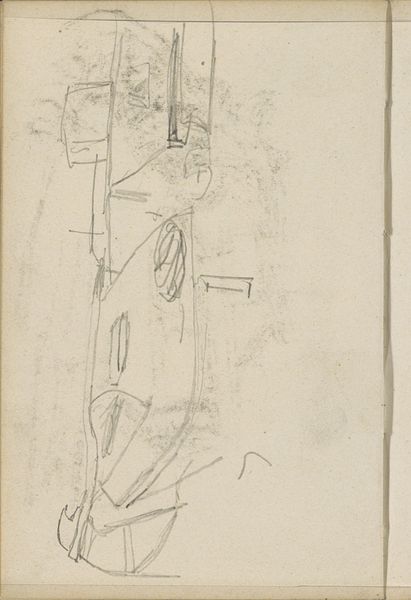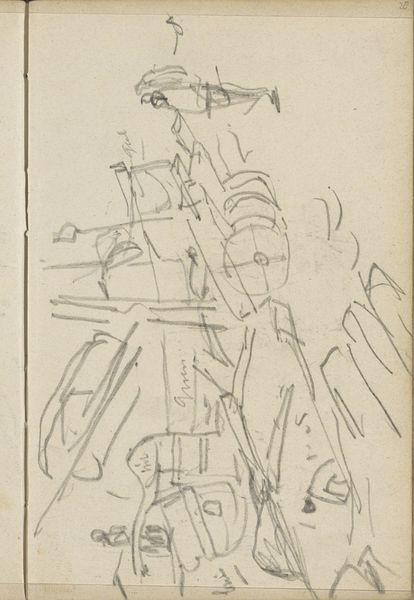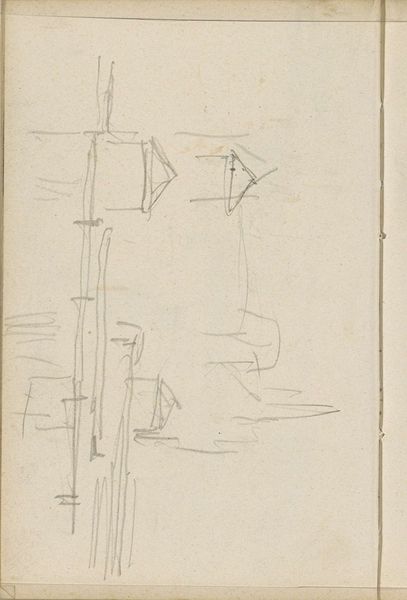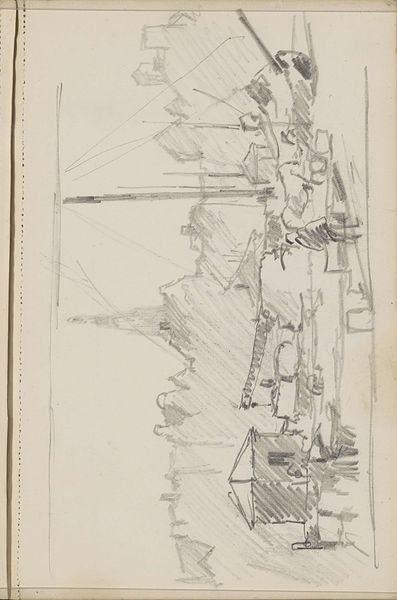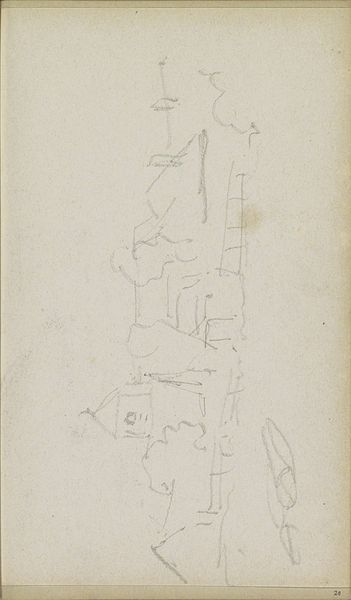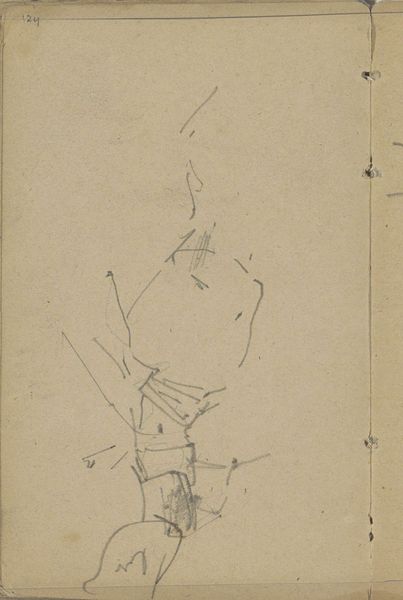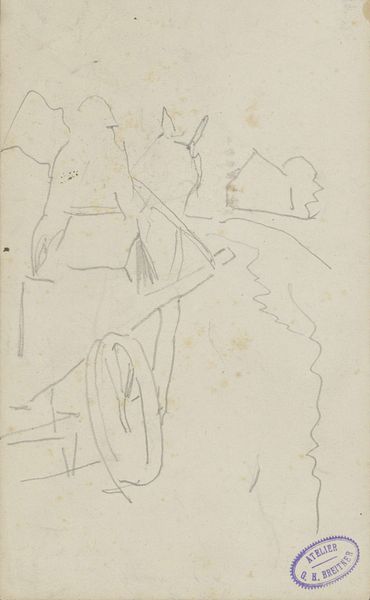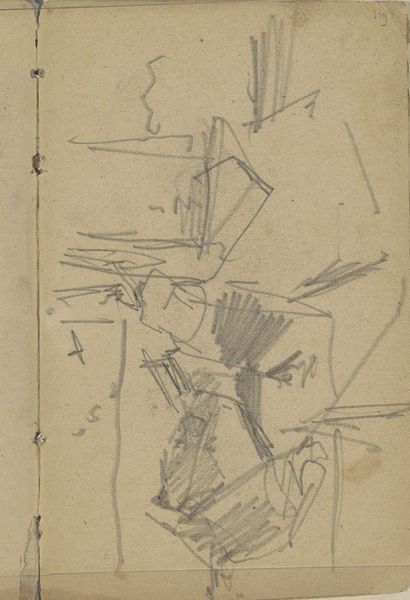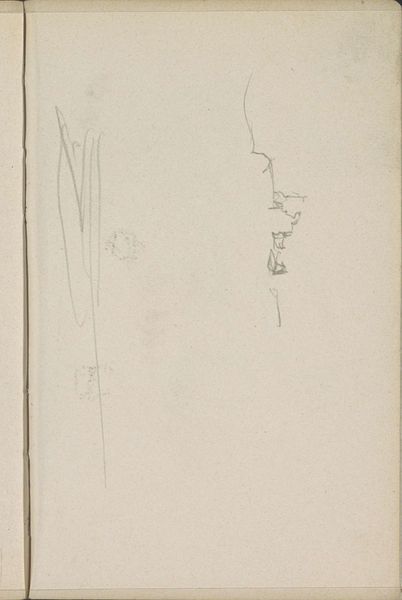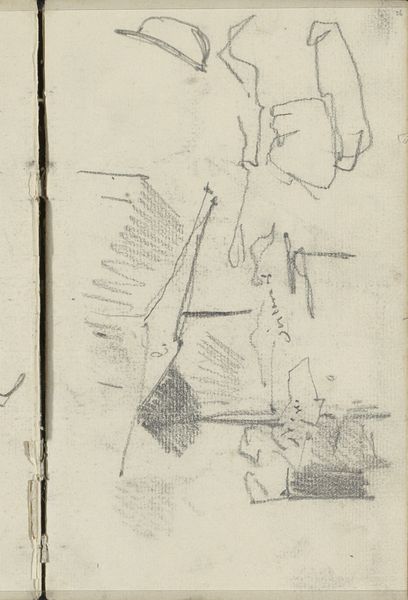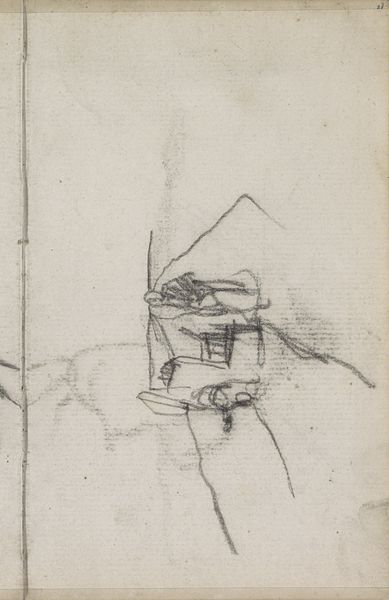
Copyright: Rijks Museum: Open Domain
Curator: This is George Hendrik Breitner's "Drie kinderen," dating from around 1915-1916, currently held in the Rijksmuseum. It’s a pencil drawing on paper. Editor: It has a really unfinished, almost ethereal quality to it, doesn’t it? You can practically feel the artist's hand moving across the paper, sketching rapidly. Curator: Absolutely. Breitner was deeply embedded in Amsterdam's social fabric. We often see that represented, not as sweeping historical narrative but instead, intimate scenes like this one. Consider the positionality implied; here, we see domestic space occupied by ordinary subjects, which serves a very real social function. Editor: What strikes me is the economy of line. It is quite a utilitarian way of producing images, yet still retaining elements of emotion that is captured in those strokes of the pencil against the page. Paper itself becomes both canvas and material evidence. Curator: Indeed. Breitner embraced Impressionism, so quick impressions were crucial to him, moving away from academic painting toward a sense of immediacy. Note how this portrayal eschews the staged formality of earlier portraiture in favor of showing three children in a very everyday moment. Editor: What intrigues me too is the sense that we are presented a slice of time: where do we begin to account for those historical impressions against the availability of Breitner's material choices and methods in the context of turn-of-the-century portrait production? How is Breitner changing how artists make and share such pictures of his time? Curator: Breitner made an incredible effort to accurately and realistically depict figures and environments, as opposed to romanticized, grand versions that were deemed noble in some fashion. Consider how he used photography to develop this skill for precision; however, such media availability should also give pause about their roles as documentation, manipulation, and commodification for contemporary observers. Editor: I concur; seeing the raw process laid bare encourages us to think about the artist's choices and how their labour informs the final product as much as artistic intention does. Curator: So, Breitner gives us a window into early 20th-century Dutch society and its representation. It’s the tension between that candid capture and the artifice of representation where we must acknowledge these nuances. Editor: And through the drawing's stark simplicity, we gain an awareness of process and social observation so intrinsic to Breitner's art.
Comments
No comments
Be the first to comment and join the conversation on the ultimate creative platform.
